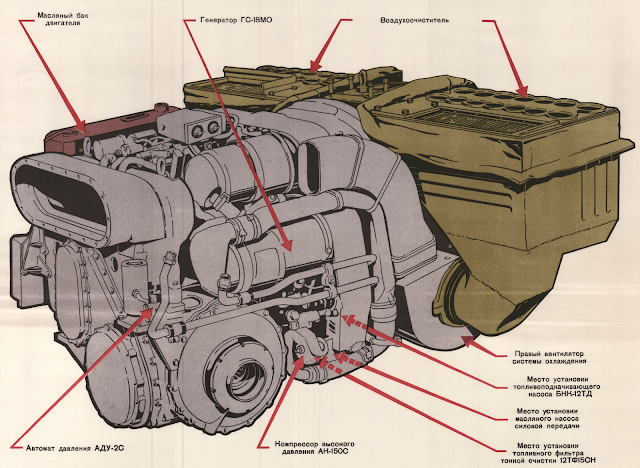T-80 MBT engine air filtration and dust prevention systems - Part 2

This article does not specifically cover individual filtration units but is a collection of features across several T-80 engine variants. Since 1976, almost all T-80 variants came standard with gas turbine engines. Early T-80 variants utilized the GTD-1000T, the T-80B and its subsequent variants fielded the GTD-1000TF and the later production models of the T-80U used the GTD-1250. With each iteration, the HP (kW) increased to 1000 HP (745kW), 1100HP (820kW) and 1250HP (919kW). The T-80 uses a monoblock-style engine d eveloped in the 1970s by VNIITransmash "Предприятие п.я. А-7701" , which means the engine block is mounted together with the air filtration system and other vital components. The air filtration unit is made of several parts assembled into a monoblock. The air filtration unit consists of 2 cyclone batteries, 2 oil cooling radiators and 2 cooling ventilators. The 2 batteries contain cyclone filters. There are 14 cyclone filters arranged in a 2x7 pattern on each b...
